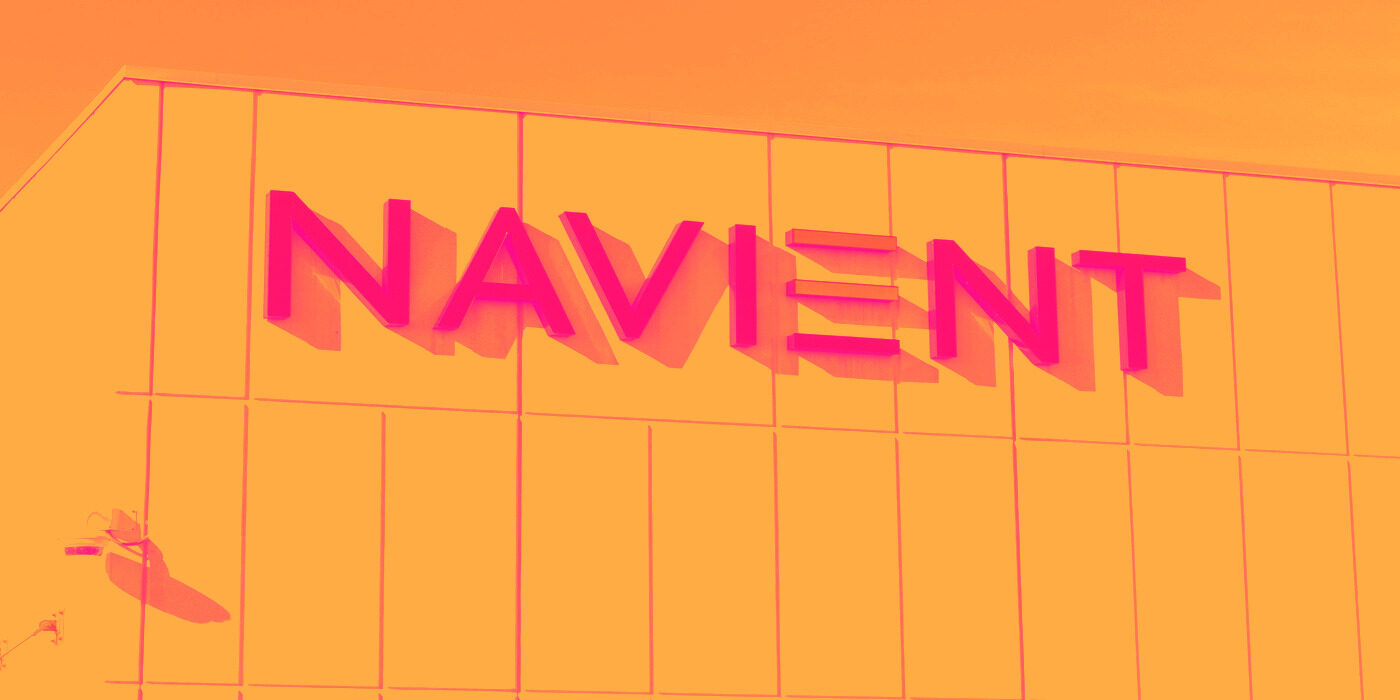
Student loan servicer Navient (NASDAQ: NAVI) beat Wall Street’s revenue expectations in Q3 CY2025, but sales fell by 62.6% year on year to $169 million. Its GAAP loss of $0.88 per share was significantly below analysts’ consensus estimates.
Is now the time to buy NAVI? Find out in our full research report (it’s free for active Edge members).
Navient (NAVI) Q3 CY2025 Highlights:
- Revenue: $169 million vs analyst estimates of $162.8 million (62.6% year-on-year decline, 3.8% beat)
- EPS (GAAP): -$0.88 vs analyst estimates of $0.17 (significant miss)
- Adjusted Operating Income: -$108 million vs analyst estimates of $62 million (-63.9% margin, significant miss)
- Market Capitalization: $1.16 billion
StockStory’s Take
Navient’s third quarter was marked by significant revenue and earnings misses relative to Wall Street expectations, yet the market responded positively, reflecting confidence in the company’s strategic execution. Management pointed to robust loan origination growth, particularly in the Earnest refinance and in-school lending lines, and emphasized progress on cost reduction initiatives. CEO David Yowan highlighted that, despite elevated provision expenses driven by revised credit and prepayment assumptions in legacy portfolios, the company made substantial headway in streamlining operations and lowering its expense base.
Looking ahead, Navient’s outlook is shaped by continued momentum in loan originations, especially as federal policy changes drive more borrowers toward private refinancing and in-school loans. Management believes that further reductions in operating expenses, combined with the expansion of the Earnest platform and potential interest rate tailwinds, will support future profitability. CFO Joe Fisher stated, “We expect Consumer Lending net interest margin for the fourth quarter to improve, benefiting from both product mix and ongoing efficiency initiatives,” while also noting that elevated provision levels may persist as legacy portfolio risks are worked through.
Key Insights from Management’s Remarks
Management attributed the quarter’s mixed results to a combination of strong new loan growth, cost cutting progress, and headwinds in legacy loan performance, as well as updated credit and prepayment assumptions.
- Earnest origination surge: The Earnest platform doubled origination volume year-over-year for the third consecutive quarter, driven by $528 million in refinance loans and $260 million in in-school loans. Management stressed the high credit quality and increasing share of graduate borrowers, with more than half of refi customers holding graduate degrees.
- Expense reduction ahead of schedule: Navient completed its final transition services obligation, enabling the acceleration of planned expense removals. Management now expects to exceed the $400 million run-rate expense reduction target by the end of 2025, driven by infrastructure and corporate footprint rationalization.
- Legacy portfolio headwinds: Lower prepayment speeds—reflecting shifts in federal loan forgiveness policy—combined with revised default and recovery assumptions, led to higher provision expenses. CEO David Yowan explained that these adjustments increased projected life-of-loan cash flows but also required significant upfront provisioning.
- ABS securitizations support growth: Navient completed its fourth asset-backed securities (ABS) financing of the year, with strong investor demand allowing for high advance rates. This supports the company’s ability to fund new loan originations with lower capital intensity.
- Shift in business mix: The company is transitioning from legacy portfolios toward growth in the Earnest platform, with a focus on high-quality, high-balance customers and new opportunities in the graduate lending market as federal policies evolve.
Drivers of Future Performance
Navient’s forward outlook is anchored by continued growth in loan originations, expense reductions, and evolving federal policy dynamics impacting borrower behavior.
- Policy-driven refinance demand: Management expects that ongoing changes in federal loan programs, including fewer forgiveness and relief options, will make private refinancing more attractive to borrowers. CEO David Yowan noted that about 50% of current refi originations are from federal loan consolidations, a level not seen since before the pandemic.
- Expense discipline and platform efficiency: The company aims to complete more than 90% of its planned expense reduction by the end of 2025, with further opportunities to streamline operations. CFO Joe Fisher said that operating expenses should continue to decline as legacy infrastructure is removed, enhancing profitability.
- Credit risk in legacy portfolios: While delinquency trends are improving, management cautioned that legacy portfolios remain exposed to elevated charge-offs and may require additional provisioning if current repayment and macroeconomic trends persist. Joe Fisher emphasized that most credit weakness is concentrated in older private student loans, rather than recent originations.
Catalysts in Upcoming Quarters
In the coming quarters, our team will closely watch (1) the pace and sustainability of loan origination growth, particularly in the Earnest refinance and in-school segments; (2) execution on further expense reductions as legacy infrastructure is phased out; and (3) the impact of evolving federal policy on borrower repayment behavior and prepayment speeds. The November Earnest business update and further ABS securitizations will also serve as key signposts for Navient’s strategic progress.
Navient currently trades at $11.60, down from $12.94 just before the earnings. In the wake of this quarter, is it a buy or sell? See for yourself in our full research report (it’s free for active Edge members).
High Quality Stocks for All Market Conditions
Donald Trump’s April 2025 "Liberation Day" tariffs sent markets into a tailspin, but stocks have since rebounded strongly, proving that knee-jerk reactions often create the best buying opportunities.
The smart money is already positioning for the next leg up. Don’t miss out on the recovery - check out our Top 5 Growth Stocks for this month. This is a curated list of our High Quality stocks that have generated a market-beating return of 183% over the last five years (as of March 31st 2025).
Stocks that made our list in 2020 include now familiar names such as Nvidia (+1,545% between March 2020 and March 2025) as well as under-the-radar businesses like the once-small-cap company Comfort Systems (+782% five-year return). Find your next big winner with StockStory today.
StockStory is growing and hiring equity analyst and marketing roles. Are you a 0 to 1 builder passionate about the markets and AI? See the open roles here.





